| Compact SUV; Built in Canada, Japan |
|
|
| Good condition price range: $1,000 – $2,800* |
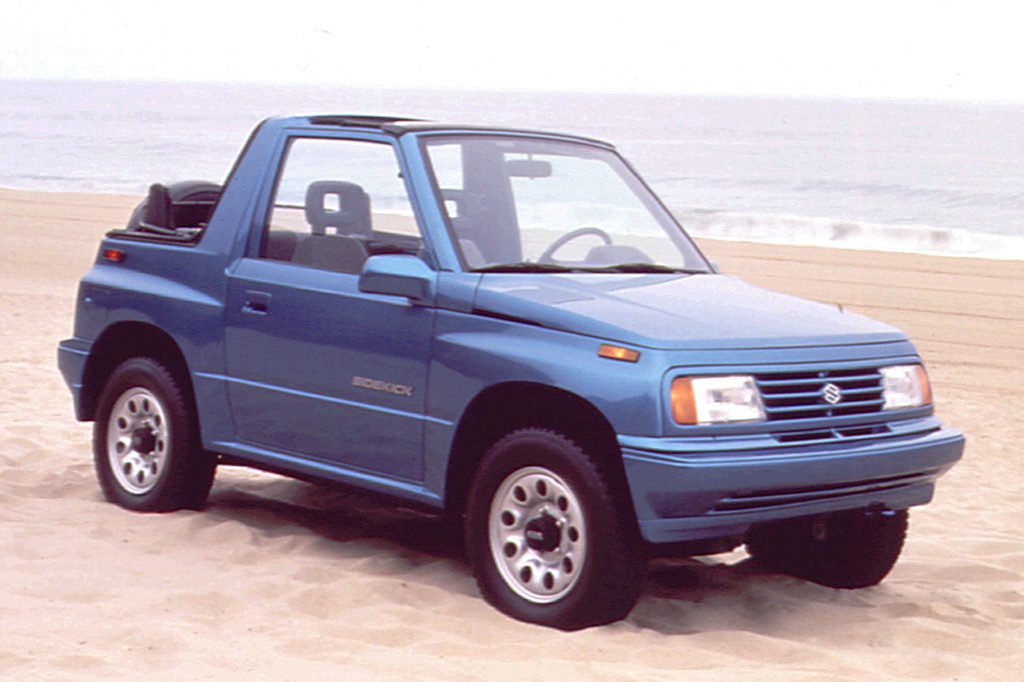
1992 Suzuki Sidekick 2-door convertible
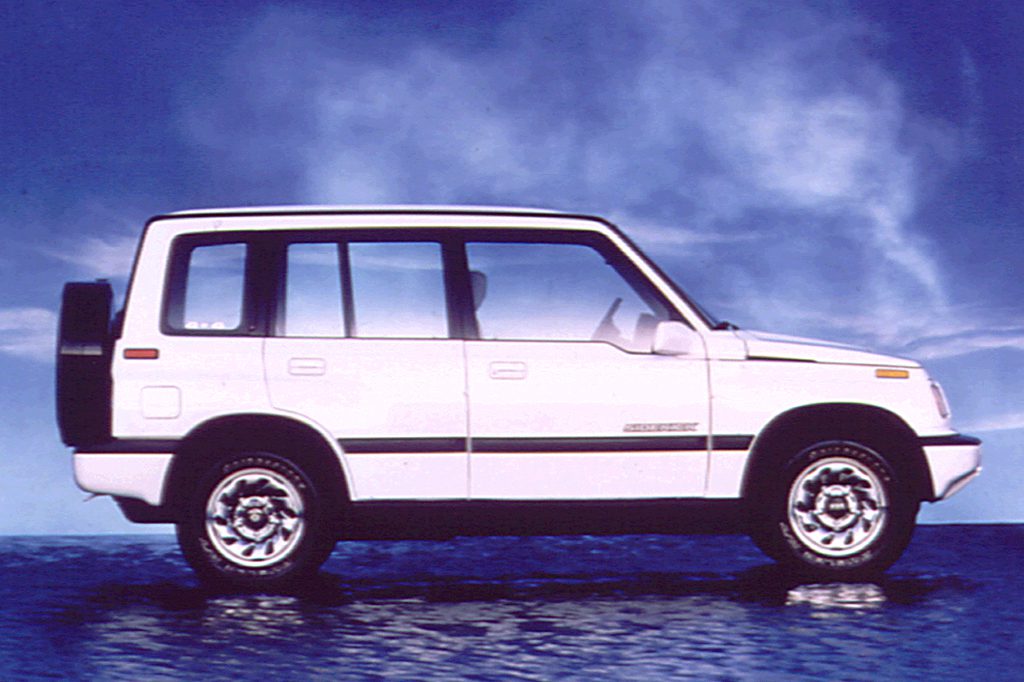
1994 Suzuki Sidekick 4-door wagon
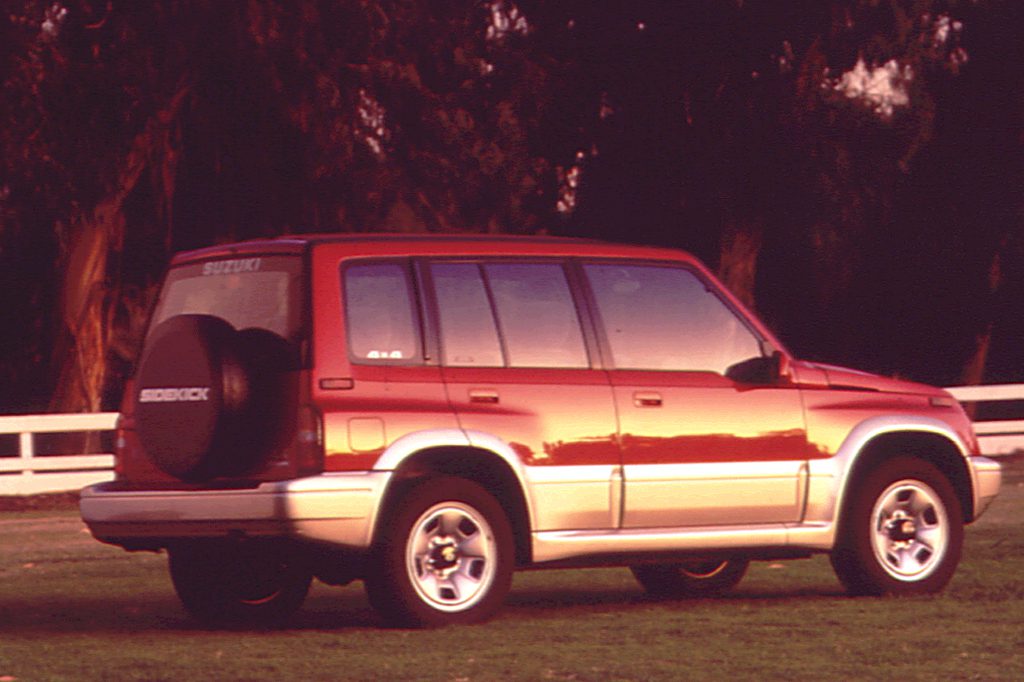
1996 Suzuki Sidekick Sport 4-door wagon
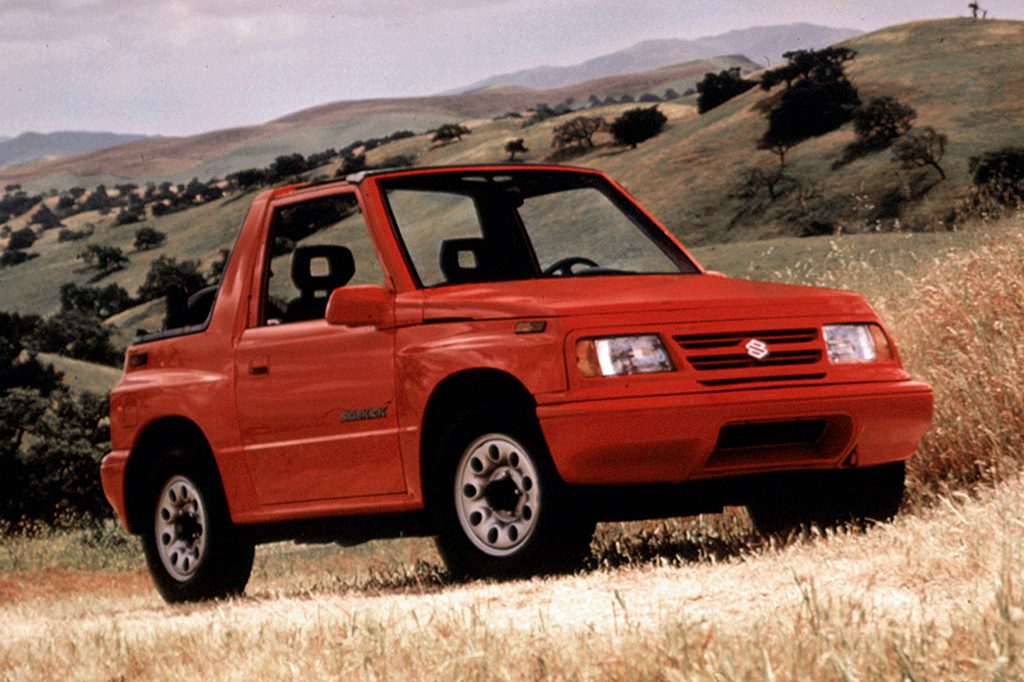
1997 Suzuki Sidekick 2-door convertible
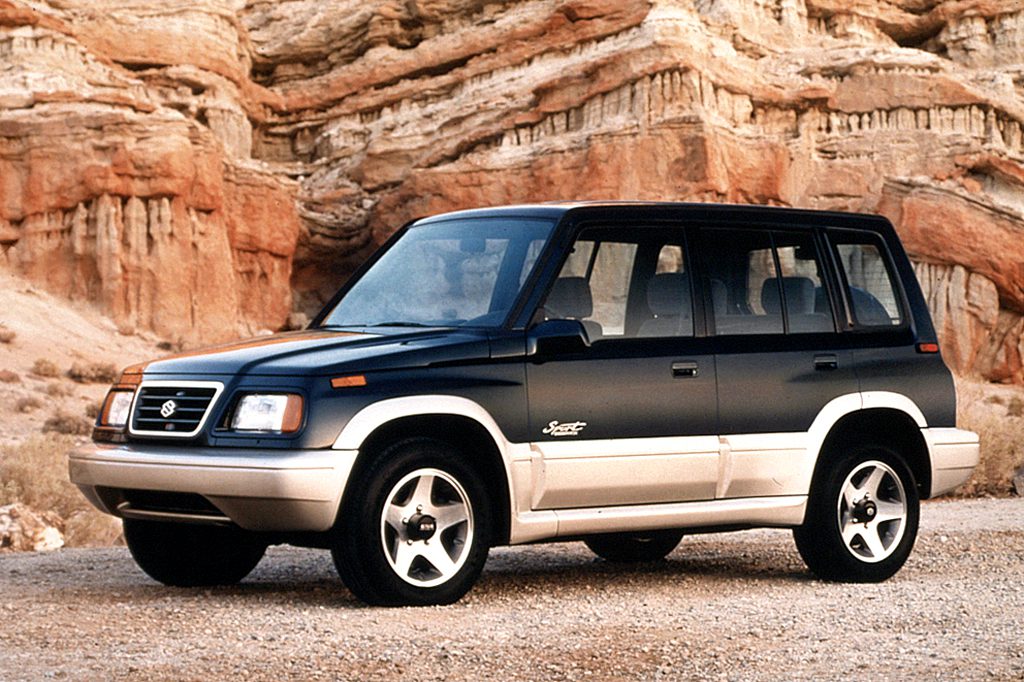
1995 Suzuki Sidekick Sport 4-door wagon
| Pros: |
|
| Cons: |
|
Though better than the tiny old Samurai, this is still not a good choice for everyday driving, even in 4-door form.
Overview
Suzuki launched its compact 4-wheel-drive sport-utility vehicle in 1989, adding a 2-wheel-drive companion for 1990. Geo also sold a version called Tracker. Sidekicks were powered by a 1.6-liter engine that made 80 horsepower. The lineup included a base JS, available only as a soft-top convertible with 2WD; plus more expensive JX and JLX editions, equipped with on-demand 4WD and either a soft top or hardtop. A 5-speed manual transmission was standard, and a 3-speed automatic transmission was optional.
Yearly Updates
| 1991 Sidekick A 4-door hardtop Sidekick arrived in ’91, joining the soft-top 2-door models. Riding a wheelbase 11 inches longer than the 2-door’s, bodies measured 16 inches longer overall. Four-door Sidekicks came in base JX and upscale JLX trim. All 4-door models used the 80-horsepower engine with a standard 5-speed manual gearbox, on-demand 4-wheel drive, and new antilock rear brakes. A 2-place folding rear seat was standard on the JLX and optional on the JX. |
| 1992 Sidekick Four-door Sidekicks earned a power boost, adopting a 95-horsepower engine with dual-overhead camshafts. The midlevel JL 4WD convertible was dropped, leaving only two 2-door models, with the 80-horsepower engine. Equipped with 4-wheel drive and new automatic-locking front hubs, 4-door Sidekicks came in JX or top-line JLX trim. A 2-wheel-drive JS 4-door arrived during the 1992 model year. A 4-speed automatic transmission now was installed in 4-door models as an option, but the 3-speed unit hung on for 4WD 2-doors. |
| 1993 Sidekick Except for a few trim changes, Sidekicks showed no appreciable change for 1993. |
| 1994 Sidekick Sidekicks gained an antitheft alarm, tilt steering column, and center high-mounted stoplamp. |
| 1995 Sidekick Two-door JX convertibles got the 95-horsepower engine this year. All two-doors gained a new convertible top with zip-out plastic side windows. |
| 1996 Sidekick Sidekicks added dual airbags in 1996, with 4-wheel antilock braking a new option. The new Sidekick Sport got a more potent engine: a 1.8-liter, making 120 horsepower. All other Sidekicks held the 95-horsepower engine. Offered in JX and JLX trim, Sport models had a longer nose, fender flares, 2-tone paint, 16-inch tires (instead of 14s), and a wider stance. Four-wheel antilock brakes that worked in both 2WD and 4WD joined the option list. |
| 1997 Sidekick A new price-leader 2-wheel-drive JX Sport wagon joined the lineup. Automatic-locking front hubs were standard on the Sport JLX; other models had manual-locking hubs. |
| 1998 Sidekick No changes were made for ’98 in anticipation of an all-new ’99 Sidekick, which would be called the Vitara. |
